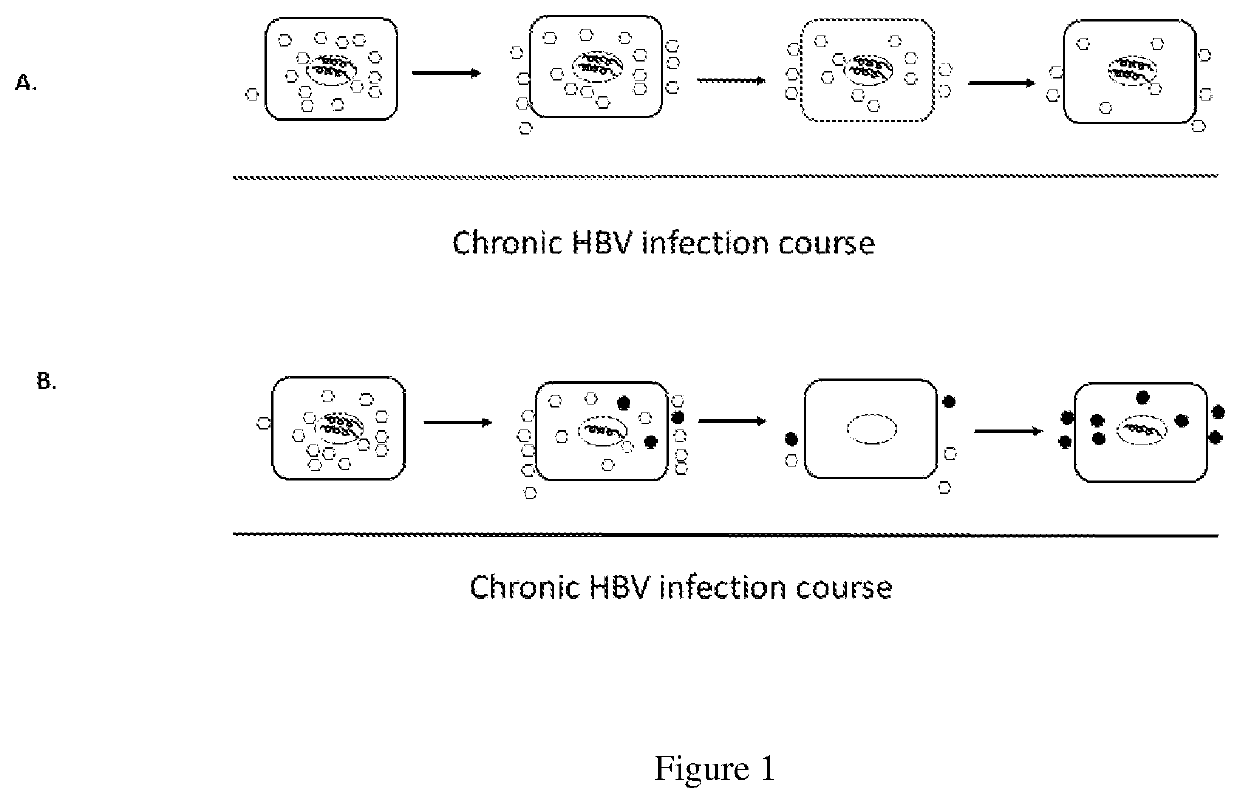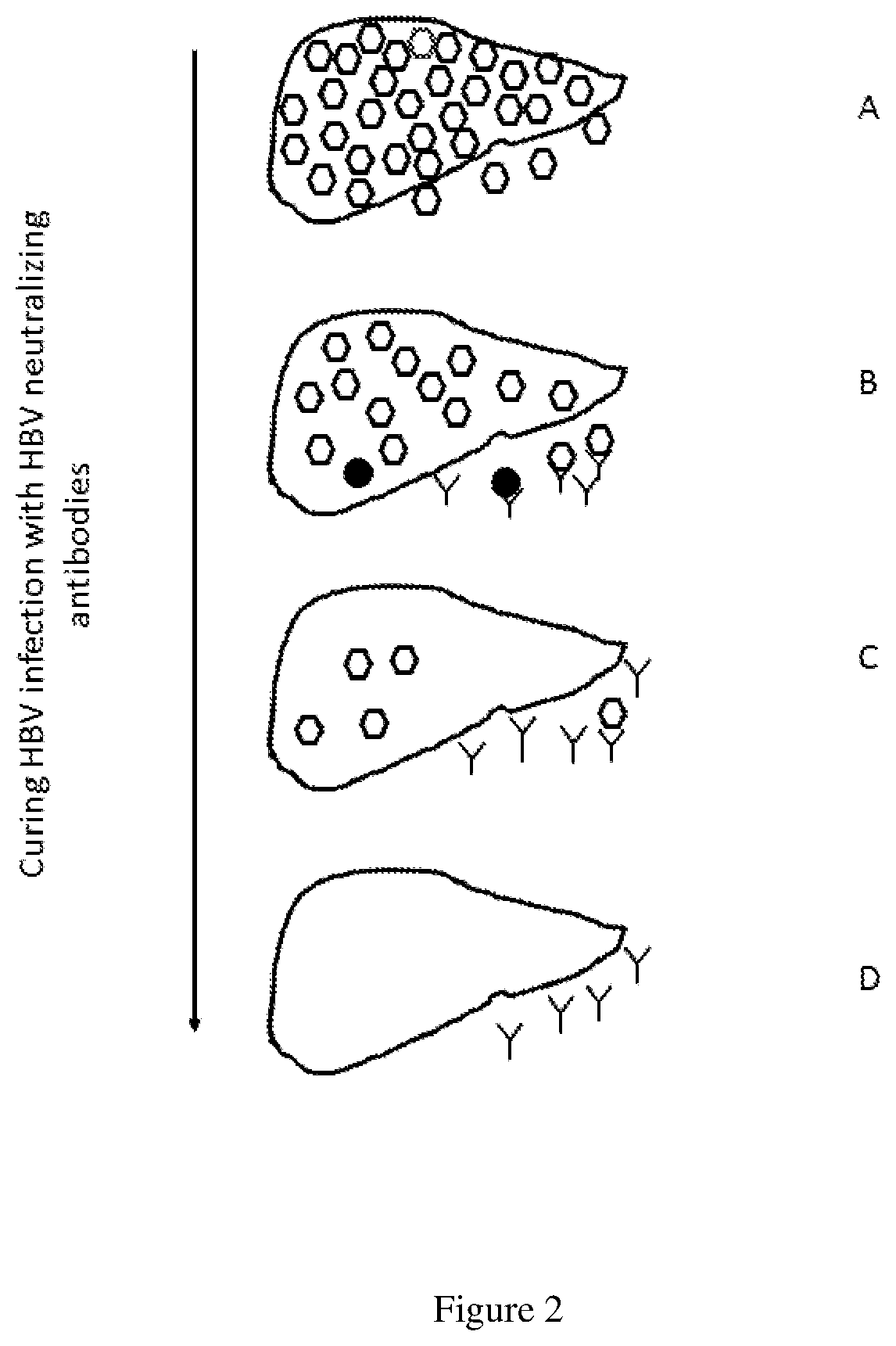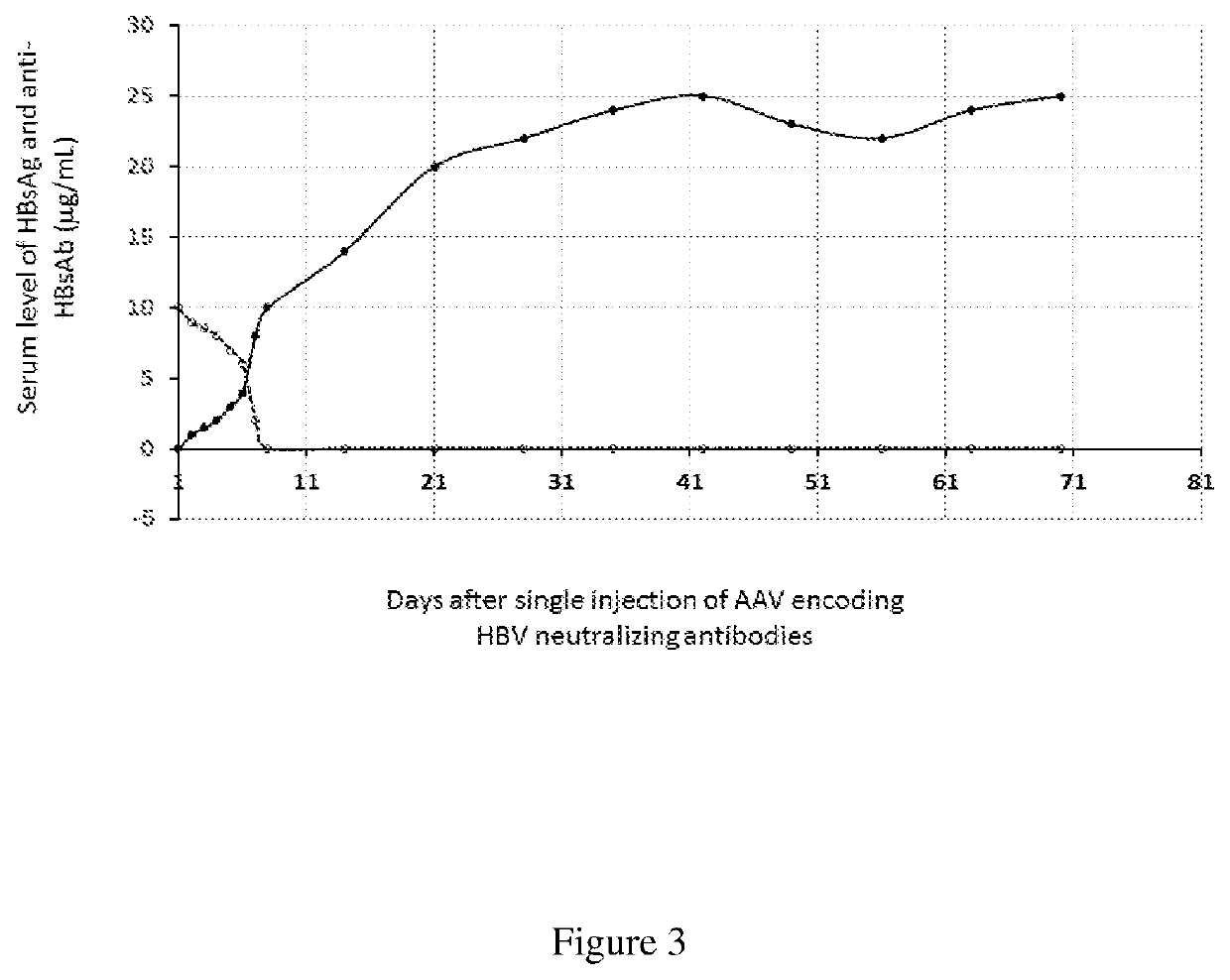Methods of curing HBV infection and providing complete protection against HBV infection
a technology of hbv and complete protection, applied in the field of treatment and prevention of hepatitis b virus (hbv) infection, can solve the problems of poor tolerance of interferon treatment, poor antiviral therapy, liver failure, etc., and achieve the effect of high risk of hbv infection, and sufficient level of hbv neutralizing antibodies
- Summary
- Abstract
- Description
- Claims
- Application Information
AI Technical Summary
Benefits of technology
Problems solved by technology
Method used
Image
Examples
example 1
[0045]Wildtype virus was replaced by mutant virus in experimental infection. Duck hepatitis B virus (DHBV) and DHBV infected ducks are validated models for studying HBV infection. A group of ducks were experimentally infected with a mix of wildtype (WT) DHBV and mutant (MT) DHBV that only replicated at about 50% efficiency of WT replication. Because of significant replication advantage over mutant, WT quickly became dominant population and the mutant was about to disappear from the infected livers. However, we then observed an unexpected reversal in which WT was progressively eliminated and replaced by the mutant that became predominant or an only virus population in next 4-6 weeks (Zhang and Summers, 1999), suggesting that WT was being eliminated from the infected livers, and the WT clearing livers were then reinfected with the mutant.
example 2
[0046]The same dynamic elimination of earlier virus populations was also reported in clinical HBV infection. for instance, WT was frequently eliminated and replaced by pre-core or core or pre-S or S mutants in untreated patients (Brunetto et al., 1991; Okamoto et al., 1994; Yamamoto et al., 1994), suggesting that HBV infected livers are no longer infected with the initially infected WT, but with the lately emerged mutants, and the recurrent infections prolong the course of HBV infection.
[0047]This dynamic elimination of the earlier virus populations also holds true for treated patients with antivirals. For instance, WT was frequently eliminated from treated livers, which were then reinfected with drug resistant mutants in nucleos / tide analogues (NAs) treated patients(Ghany and Doo, 2009; Locarnini and Bowden, 2010).
[0048]Taken together, HBV infection is not an extension of the initial infection, but is established and maintained with new rounds of infection.
[0049]FIG. 2 outlines the...
example 3
[0056]There is a clear relationship between appearance of anti-HBs antibodies and clearance of HBV infection. In evaluating the treatment efficacy in an animal model of HBV infection, chronic DHBV infected ducks were treated with DNA vaccines that encoded DHBV envelope or core proteins as monotherapy or in combination with a reverse transcriptase inhibitor (lamivudine). The seven of eight animals that had detectable anti-HBs antibodies, cleared chronic DHBV infection including DHBV covalently closed circular DNA (cccDNA) from infected livers (Thermet et al., 2008).
PUM
| Property | Measurement | Unit |
|---|---|---|
| concentration | aaaaa | aaaaa |
| time | aaaaa | aaaaa |
| time | aaaaa | aaaaa |
Abstract
Description
Claims
Application Information
 Login to View More
Login to View More - R&D
- Intellectual Property
- Life Sciences
- Materials
- Tech Scout
- Unparalleled Data Quality
- Higher Quality Content
- 60% Fewer Hallucinations
Browse by: Latest US Patents, China's latest patents, Technical Efficacy Thesaurus, Application Domain, Technology Topic, Popular Technical Reports.
© 2025 PatSnap. All rights reserved.Legal|Privacy policy|Modern Slavery Act Transparency Statement|Sitemap|About US| Contact US: help@patsnap.com



